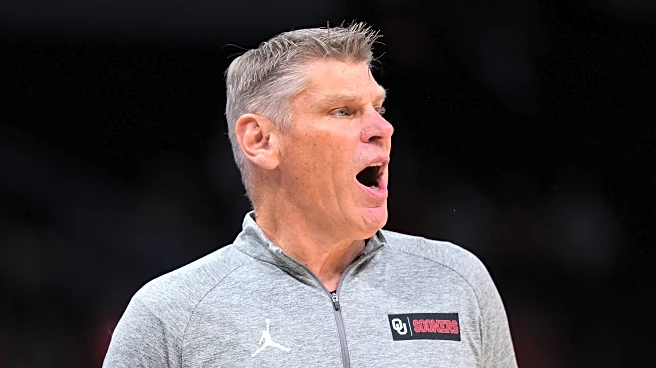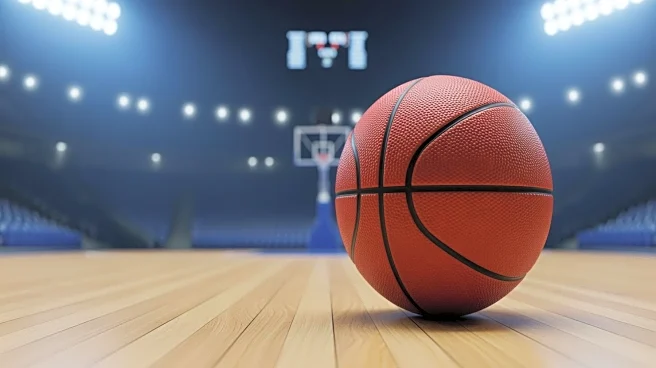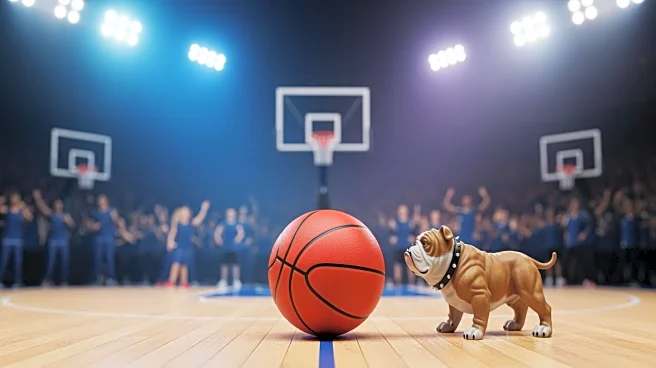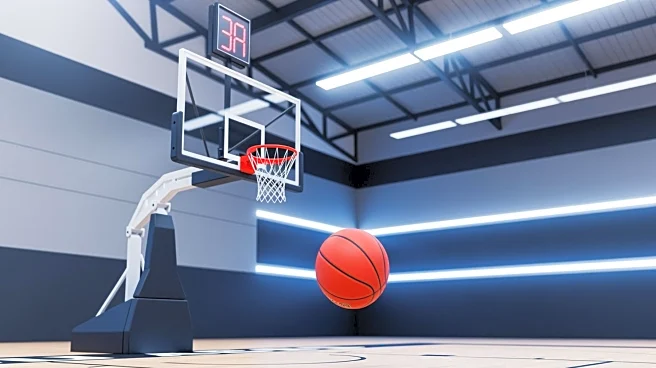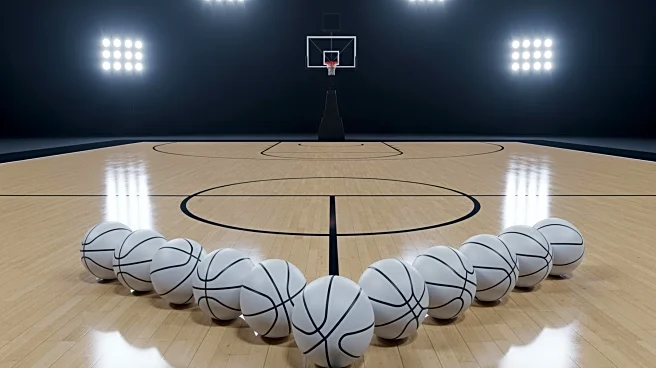For the first time this season, Gonzaga faced a team capable of punching back. Oklahoma arrived with length, maturity, and one of the top-ranked transfer classes in all of college basketball. It was fans’
first glimpse at how this year’s Bulldog squad may fare against high-level competition, and I’m pleased to report that Gonzaga passed the test with flying colors.
The Bulldogs beat Oklahoma 83-68 in what was technically a “neutral site” game (although the distance from the Spokane Arena to the McCarthy Athletic Center can best be described as somewhere between “spitting-” and “very walkable-”). The Zags controlled the game with rhythm and discipline from the opening stretch, throwing bodies and seemingly endless lineup combinations at the Sooners until Porter Moster’s team just ran out of ideas. The ball moved inside out. The bigs posted deep seals. The guards dictated pace instead of reacting to it. When the matchup became physical, Gonzaga remained composed. Oklahoma never really dictated terms, and every key element that defined the scouting report tilted toward the Bulldogs.
For a team that entered the night looking to confirm what the numbers and the preseason confidence hinted at, this was the exact response. Gonzaga looked connected. It looked prepared. And it looked like a group that already understands its identity.
The Good
Graham Ike did Graham Ike Things
Gonzaga controlled the interior because Graham Ike controlled space. He finished with 19 points and 11 rebounds on 9-17 shooting in 26 minutes before fouling out, and his scoring came almost entirely at the rim. Every deep seal forced Oklahoma to either foul or send help, and both choices opened lanes for cutters and kickouts.
Gonzaga scored 58 points in the paint compared to 20 for Oklahoma. The Bulldogs also out-rebounded the Sooners 42 to 29, and Ike was responsible for 10 defensive boards on his own. He drew multiple fouls and put Gonzaga in the bonus with more than 7 minutes left in the second half.
When Gonzaga needed a possession with purpose, they went inside. Ike gave them structure and Oklahoma had no solution.
Defense is Fun Again
Gonzaga’s much improved defense held Oklahoma to just 68 points on 38% shooting and forced 16 turnovers. The Sooners were chasing rhythm and momentum all night, and never found it, thanks to the versatility and adaptability of Gonzaga’s defense.
Star Miami Transfer Nijel Pack went 2-9 from three while Xzayvier Brown finished the night with 5 turnovers. Both players got buckets (18 and 21 points respectively), but neither controlled the flow or created advantages for the pieces around them.
Perhaps the most revealing stat of the game is the differential in total assists. No Sooner recorded more than 1 assist for themselves (5 total on the game), while the Zags managed 22 as a team.
Defensively, it was Mario Saint Supery who catalyzed the perimeter. He recorded 3 steals, jumped passing lanes, and drew fouls on the perimeter by meeting Oklahoma’s guards at halfcourt and forcing pressure. His presence turned ball screens into traps and dribble handoffs into scramble plays. Jalen Warley cleaned everything else up.
The final stat line tells the same story. Oklahoma managed only 20 points in the paint and settled for 24 threes to avoid traffic at the rim. Gonzaga controlled the turnover battle, controlled spacing, and controlled tempo. Oklahoma made some shots. Gonzaga made sure none of them mattered.
Lineup Variables and the Constant Shape-Shift
Oklahoma never settled into a rhythm because Gonzaga never let the game stay in one form. Every substitution changed the style of play completely. One minute Gonzaga played through Graham Ike on the block, the next it looked like a spread and sprint group that attacked off the bounce and pushed pace after every miss.
Nine dudes logged double digit minutes. 10 dudes saw the floor. And there’s a case to be made that the one guy who didn’t get minutes (Davis Fogle) is the most dangerous scorer on the roster.
Scoring came from everywhere in the Spokane Arena. Four players reached double figures. Five different players recorded three assists or more. One trip it was Warley initiating from the wing, next it was Braeden Smith collapsing the defense off a hard drive inside, after that it was a transition three from Adam Miller or Steele Venters, a backdoor dunk from Tyon Grant Foster, a floater from the middle of the lane for Huff, or a reverse layup on the baseline for Saint Supery.
Gonzaga toggled between pace, power, and length for all 40 minutes, with some lineups pressing tempo and hunting transition opportunities while others slowed the game down and pounded the paint. Oklahoma spent the night adjusting to whatever came next and never looked comfortable doing so.
There are ten different versions of what this team can be, and every one of them is playable.
The Bad
For as strong as the win was, there were real drop offs once Gonzaga moved away from its core rhythm. Graham Ike fouled out in 25 minutes, and when he left the game the offense lost its interior anchor. Braden Huff never settled in as the release valve, despite finishing with 13 points he went an uncharacteristic 6-17 from the field and 0-2 from three, and Oklahoma basically sat bodies in the paint and made him prove he could make them pay from outside (he couldn’t….). Braeden Smith also had a quiet night. He played 13 minutes, finished 1-3 from the field with 3 assists and 1 turnover, but never put his stamp on tempo or created pressure at the point of attack. Nothing catastrophic, but nothing that made the case for him as the first guard on the floor either.
The shooting slump also dragged on longer than it needed to. Gonzaga finished 6 for 22 from three, and it showed when Oklahoma tightened its rotations in the second half and dared Gonzaga to beat them over the top. After putting up 52 points in the first half, Gonzaga only scored 31 in the second. The overall result stayed comfortable because the lead was already built, but the offense went through stretches in the second half of looked flattened out and became reactive for long stretches. On the other end, defensive communication broke at times. There were a handful of possessions where a cutter slipped behind coverage or weak side help never fully arrived, especially when Tyon Grant Foster was involved in new rotations and still learning the system. The win never felt in danger. The tape will still give Mark Few plenty to chew on.
The Stuff to Keep an Eye On
Ismaila Diagne remains the unanswered question. He checked in for 0:45 at the end of the first half, then never touched the floor again. Few rode small-ball spacing, keeping Warley at the 4 and rotating Ike and Huff at the 5. When Grant-Foster slid to the 4, spacing stretched, and cutting lanes opened. And when Grant-Foster played the 2 (an extremely exciting wrinkle in the new offense), everything felt different. He finished with 14 points and 7 rebounds in 22 minutes and created pressure without needing design or late shot-clock actions specifically drawn up for him.
Meanwhile, the Zags are just better when Jalen Warley is on the floor. He’s always in the right place, never bites on bad spacing, and he sees actions before they develop. On defense, he handled Oklahoma’s forwards with timing and anticipation, and his hands were everywhere. He finished with 13 points and 8 rebounds in 23 minutes, including 5 offensive boards that turned empty possessions into scoring opportunities.
Mario Saint Supery is also forcing a conversation about point guard minutes already. He gave Gonzaga instant punch on both ends and played 22 minutes to Braeden Smith’s 13. He finished with 3 steals, drew multiple fouls from Oklahoma’s guards by simply refusing to concede space, and lived in passing lanes to force transition buckets the other way. It’s early, but the eye test and the numbers both point in the same direction for the time being.
The only missing piece for Gonzaga was vertical defense. Gonzaga finished with 2 blocks total. With no shot deterrence at the rim, every stop relies on rotations, physicality, and gang rebounding. That’s where Diagne’s size matters. Even 6 to 8 minutes with Izo in the lane changes the terms of engagement, and instead, he sat. I have to believe we’ll see more of him soon, but if Diagne isn’t getting minutes when Ike has fouled out and Huff is playing with 3, it’s hard to figure out when those minutes come.
This rotation can shape-shift into anything — downhill slashing, spacing, small-ball chaos, defensive clamps — but it still needs a rim anchor. Whether Few lets Diagne become that piece remains to be seen.
Final Thoughts
The bottom line is that while it wasn’t perfect, Gonzaga still beat a fringe top-25 team by 15 on a night when they shot 6-for-22 from three, when Graham Ike fouled out, when Braden Huff shot 35% from the field, when their starting point guard played just 13 minutes, and when their 7-foot rim protection and rebounding specialist logged less than one minute of action. They still won the first half by 18. They still outscored Oklahoma 58 to 20 in the paint. They still won second-chance points 16 to 7 and bench points 38 to 21. They still forced 16 turnovers and gave up only 7. Oklahoma needed threes to survive because they could not score inside, and they still went 6-26 trying.
Tyon Grant-Foster has been on this team for like two weeks and still put up 14 points and 7 rebounds in 22 minutes by simply cutting, finishing, and being the most athletic player on the floor. Mario Saint Supery ripped 3 steals and drew key fouls at the point of attack while facilitating the offense with the kind of pace and tempo that have defined the best Gonzaga teams of years past. Jalen Warley remained impossible to write about because it’s impossible to name exactly what makes him so essential (though he is, and I’ll figure out exactly how to write about why, eventually).
Gonzaga didn’t win this game because everything clicked, they won because Oklahoma couldn’t handle the force, the length, or the depth of a team that hasn’t even figured itself out yet.
If this is the messy version, imagine the clean one.
The Zags have another chance to prove just how good this team can be on Tuesday November 11, at 7:00 PM PST when they take on Creighton live from the McCarthy Athletic Center.




